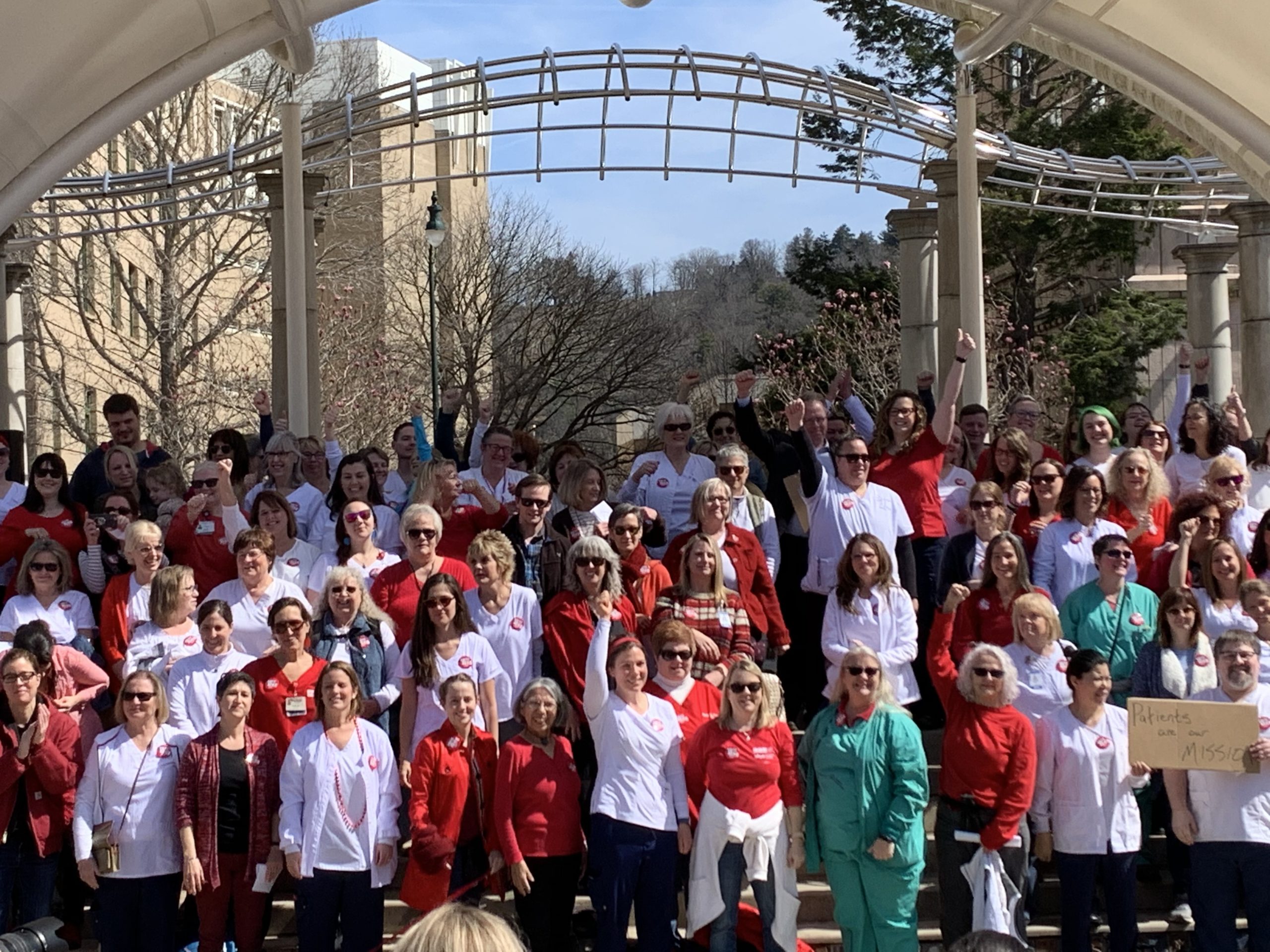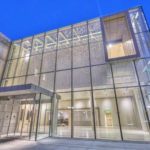Jason Sandford
Jason Sandford is a reporter, writer, blogger and photographer interested in all things Asheville.

Asheville City Council voted 4-3 Tuesday night in favor of a plan to remodel the iconic Flatiron Building into a boutique hotel, a head-turning reversal from a month ago, when a majority of City Council members indicated they opposed the plan.
Let’s break it down:
Last month: Phillip Woollcott of Charleston, S.C.,-based JPW Development and his team presented their Flatiron hotel plan to Asheville City Council on May 14. Attorney Wyatt Stevens, speaking on behalf of the developer, withdrew his proposal after four City Council members – Julie Mayfield, Brian Haynes, Keith Young and Sheneika Smith – expressed their opposition to it. The development team detailed plans for an 80-room boutique hotel complete with a basement speakeasy, rooftop bar and restaurant and retail space. But City Council members said they were worried about the impact of an increasing number of downtown hotels and the displacement of the small business owners who populated the Flatiron, which has served as an office building for its 93-year lifespan.
Tuesday night: A slightly modified plan was back before City Council on Tuesday night. Instead of 80 rooms, plans now called for 71 rooms. In a concession to concerns about the displacement of small business owners, the developer agreed to keep offices on one floor of the 8-story building, explained city Planning Director Todd Okolichany. Another change: a loading zone along Battery Park Avenue that was initially to be shared between the hotel and other users would now be for hotel use exclusively, Okolichany said.
Procedural questions: Councilman Brian Haynes, who has been most outspoken against hotel proposals, started off immediately by questioning Okolichany’s characterization of Tuesday night’s Flatiron discussion as a “continuation” of the May meeting. “I remember the applicant withdrawing the application,” Haynes said. He went on to say that was a critical distinction. If an application is withdrawn, it must go back through a number of bureaucratic hoops before ending up at City Council again, Haynes said. A withdrawal also precludes a vote, he said, with City Council “obliged to take” the withdrawal. On the other hand, if the request from the Flatiron hotel applicant in May had been one of a continuation, Haynes said, a council member could have called for a vote then and there in spite of the applicant’s request.
Okolichany said “there was some confusion” at that May meeting. The applicant did indeed use the term “withdraw,” he conceded, but after re-watching the meeting video, Okolichany said he determined that the applicant’s intent was to continue the dialogue, to go back to the community and talk about the issue, as Councilwoman Julie Mayfield had requested in her comments at the time.
“I don’t see it the same way as staff,” Haynes countered.
Okolichany again conceded that, under normal procedure, an agenda item that’s continued is continued “to a date certain,” and that wasn’t done during the May Flatiron discussion. But there could have been a vote on the issue at that time, he said.
Haynes countered that if he had known that he had a choice, he would have called for a vote last month. “I am quite disappointed in the way this has moved back to City Council so quickly,” he scolded.
Councilman Vijay Kapoor chimed in to say that something similar happened with a Biltmore Avenue hotel proposal earlier in the year. “We’re not changing the process,” he said. A voted on the Flatiron proposal didn’t happen in May, “so we’re here.”
Okolichany was again conciliatory. Going forward, city staff will be very clear “in terms of language used” about what an applicant is requesting. That was the end of that discussion.
The presentation: Vice Mayor Gwen Wisler ran the meeting Tuesday night. Mayor Esther Manheimer was out of town, but listening in via phone. City Council had previously approved allowing Manheimer to participate and vote by phone. Wisler turned the floor over to Stevens, the attorney representing the Flatiron developer. He reiterated his key talking points: that the project was not a chain hotel, but a hotel proposed by an Asheville-born developer who would be using an Asheville general contractor (Beverly-Grant Inc.); that there was plenty of comparable downtown office space for Flatiron tenants to move into; and that the hotel project would allow for critical safety and structural upgrades to the aging building.
New revelations: Stevens then addressed new information being circulated by Flatiron project opponents regarding the criminal record of one of the members of Flatiron ownership group Midtown Development Association LLC. Marshall Neil Kanner, of Miami Beach, Fla., at the time, pleaded guilty in federal court in 2008 to conspiring to illegally distribute controlled substances through a website, and launder money from the illegal Internet operation. Kanner is a minority owner of the building and served his time, Stevens said. If those facts bother you, Stevens told council, “and they bother me, then you should vote in favor of this project because Mr. Kanner will have no involvement whatsoever if it is approved.”

The historic Flatiron Building in Asheville was built in 1927./ photo by Jason Sandford
More questions: Councilman Keith Young then pressed another point with Stevens. Young noted that the Asheville Citizen-Times reported that in 1985, Asheville City Council voted to give the Flatiron ownership group at the time $800,000 in bond money to upgrade the Flatiron for office and retail space as part of an overall plan to rehabilitate the Wall Street area at the time. Young said a key argument from Stevens for approving the Flatiron hotel proposal was that long-deferred maintenance would finally be addressed, so Young wanted to know how that money awarded in ’85 was used. “What was the maintenance schedule?” Young asked.
Stevens said that his understanding from the city attorney’s office was that “there is nothing in chain of title or city archives to suggest that the city gave money to the entity that has owned building for last 33 years.” The bond money awarded in ’85 went to the “predecessor in title,” Stevens said.
Young wasn’t satisfied. He made a motion to continue the entire discussion until City Council could be given definitive answers on his questions of maintenance on the Flatiron over the years. Councilwoman Sheneika Smith seconded the motion. Wisler called the question, and Haynes, Young and Smith voted in favor of Young’s motion to continue. Wisler, Kapoor, Mayfield and Manheimer, via telephone, voted against. The motion failed.
The public hearing: Wisler opened the evening’s public hearing on the Flatiron hotel proposal, and just as at City Council’s meeting in May, just about every person who spoke came out against the plan. Over and over again, speakers told City Council that the hotel plan went against the interest of local residents.
The city is losing its character because it’s become “a playground for people who don’t live here,” said Elizabeth Schell of Purl’s Yarn Emporium on Wall Street.
“Don’t be confused or tricked by money men and their shiny things,” Schell said.
Other speakers talked about increased traffic congestion on Battery Park Avenue, whether or not the building really required the installation of a new sprinkler system and other technical issues. But the deeper questions of direction, and vision, for the city seemed to hang in the air.
“We’re talking about a change of use for a building,” said the Rev. Amy Cantrell, who works with homeless people through the BeLoved Asheville group. “Where did we have a change of use hearing for our city?” she asked.
“Somehow our city has gotten lost along the way,” Cantrell said. “What is it we’re trying to preserve?” she asked. “What happens to a local place when it is no longer local?”
After nearly two hours, no other speakers came forward and Wisler closed the public hearing.
City Council’s turn: With that, it was time for City Council members to speak. Kapoor kicked it off, reiterating what he had said before: the hotel proposal was the best plan for the long-term survival of the Flatiron Building.
Wisler, who had remained silent regarding her position during last month’s meeting, said a look at her voting record would show she takes hotel proposals on a case-by-case basis. “I voted for less hotels than any other council member” other than Councilman Haynes, Wisler said.
“While I would love to see another use for this building, I don’t think the numbers work out, and losing the building doesn’t seem to be the right answer,” she said. Thus, she would be voting for the hotel proposal, she said.
Next was Mayfield, who read from prepared remarks. She said the developer had met with opponents of the hotel project, as she had requested in May. She said the developer had sought other viable options for a building use that would provide a workable business model, and none had emerged. She said the developer had partially addressed concerns about the displacement of small businesses in the Flatiron by agreeing to leave one floor as office space. So with no other clear paths forward, “I am now compelled to support this project,” Mayfield said.
“I cannot keep moving the goal posts to avoid a vote I don’t like,” she said. “I am choosing a certain future of adaptive reuse over an uncertain future that includes decline,” she added.
Mayfield then took a moment to “walk back” a point she made in May about the Flatiron Building being the spiritual soul of the city. That was wrong, she said. It is the messy mix of people who disagree, fight and come together again that are, in fact, a city’s foundation.
“That is the soul of the city,” Mayfield said.
Young spoke up to say he would not support the hotel project, adding that City Council must “go back to the drawing board” to figure out a better way of dealing with hotels.
“This doesn’t seem to be working,” Young said, as City Council continues to struggle with balancing local residents’ needs with the onslaught of growth and development.
With that, Kapoor motioned to approve the Flatiron Building hotel plan. Manheimer seconded the motion over the phone. Kapoor, Manheimer, Wisler and Mayfield voted for it. Haynes, Young and Smith voted against it.























